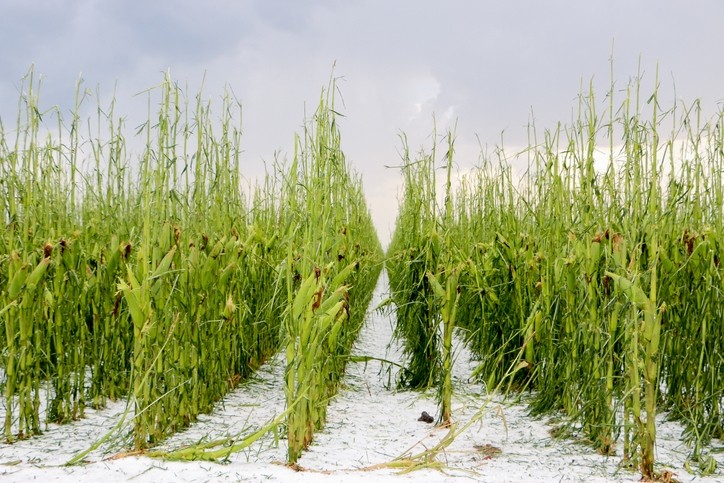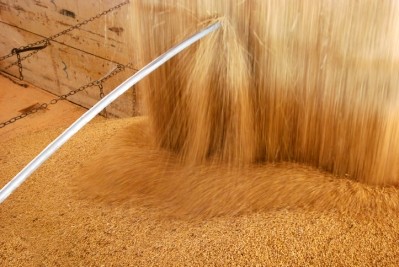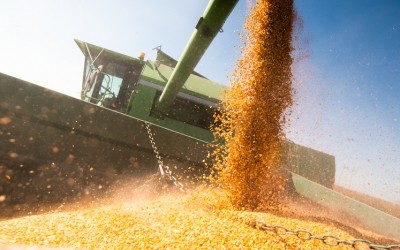USDA: US corn, soybean yield forecasts start to fall

The US Department of Agriculture (USDA) released details about anticipated US feed crop and agricultural production Thursday [September 12] in its most recent World Agricultural Supply and Demand Estimate (WASDE) report.
Overall, the USDA’s report forecasts a decline in US corn production based on lower yields. Its production estimates for soybeans also went lower based, said the US agency, on a reduction in expected yield per acre.
However, there is still some uncertainty around crop production numbers as highlighted by the crop yield forecast from Indigo Agriculture. The agtech-company is predicting that final output for both corn and soybeans could be lower than the USDA’s estimates based both on yield and acres planted.
Indigo gathers the data used in its crop reports in a different manner than the USDA, said Barclay Rogers, VP of business development for GeoInnovation at Indigo. The company uses a “living map” of agricultural land developed using modeling, big data, satellite imagery and machine learning to understand how much land is being used for different crops and what the likely yields are.
“This is big data meets agriculture in a very real way,” he told FeedNavigator. “It comes back to if you compare the USDA approach – and we have no criticism of that - it’s a very valid methodology that they’ve employed for a long time – but it’s a very different way of doing it compared to what we’re doing.”
“We’re essentially looking at every acre of corn in America every day, and using these big data processes to inform what the likely yield is across the nation,” he said.
Satellite imagery is used to establish a national estimate of acres planted in a particular crop.
“Where is the discrepancy between us and the USDA? The most straightforward answer is we’re going it about it in two different ways,” Rogers said. “We’re about 10 bushels below USDA on corn … 10 bushels per acre in yield - roll that up and it's almost a 1.5bn difference this year.”
“This is a complicated year, everybody knows that this is not a straightforward one; we have a late crop in the ground, we had a relatively good growing season through the summer and the question is 'did it catch up?'” he added. “Our perspective is, yes it made good ground, but no it did not make up for its late start and, consequently, that really is where that lower yield number is fundamentally coming from.”
Freeze fears
Additionally, the company also explored the potential amount of the corn crops at risk from an early freeze based on the percentage of the crop that had silked by August 4 or August 12 and regional freeze dates that occurred 2, 5 or 8 times in the last 10 years.
The indication is that corn that silked between August 4 and August 12 was at low risk, while corn that had not silked by August 12 was at a higher risk.
There were about 6m acres of corn and 2.6m of soy that were four or more weeks behind historical maturity levels, according to information from Indigo.
“There is a significant number of additional bushels at risk,” said Rogers. “The particular areas that jump out would be the Dakotas and over in Ohio.”
Feed crop producers in Ohio are hoping for a late frost, said Eric Richer, county director and extension educator with Ohio State University Extension. Producers in some parts of the state have not had all the growing degree units that the late-planted crops needed.
Some corn acres were planted in late June and early July and producers are concerned it will not reach maturity before a killing frost, he said.
If corn plants have not reached maturity when frost happens, corn faces issues with grain moisture and test weight, he said. Soybeans could be smaller than usual and more challenging to harvest.
USDA figures
Soybean and oilseed production
The forecast for US soybean production in 2019/20 dropped 47m bushels to 3.6bn bushels from previous estimates based on an anticipated drop in yield per acre, the USDA said.
However, an alternative assessment of the crop planted is anticipating additional decline in soybeans with a forecast for soybean production to reach 3.4bn bushels based on per-acre yields of 45.2 bushels, according to information from Indigo.
Soybean supplies were lowered 2% based on the decline in production and reduction in beginning stocks, and total ending stocks are forecast to be down 115m bushels, the department said. Season average price is forecast to increase to $8.50 per bushel while meal prices are up $5 to $305 per short ton.
Revisions for 2018/19 anticipate increased export and crush and reduced ending stocks, the department said. Exports were raised 45m bushels based on trade data.
Globally, the 2019/20 oilseed outlook anticipated reduced production, increased trade and smaller stocks, the department said. Rapeseed production has reached a 3-year low based on production in the EU and Australia.
Soybean production fell based on the US, but was partially offset by increased production in Canada, China and India, the department said. Export market changes include increased rapeseed and soybean exports for Canada.
Export changes in 2018/29 include increased sales from Argentina and the US offsetting a drop in exports from Brazil, the department said.
Soybean ending stocks in 2019/20 have been lowered based on stocks in Argentina and the US, the department said.
Corn, coarse grain considerations
Anticipated corn production in the US for 2019/20 fell along with corn use in ethanol, but predicted ending stocks increased slightly, the USDA said. Corn production is forecast at 13.79bn bushels – a drop of 102m bushels from last month based on a reduction in expected yields.
However, an alternative forecast for the US corn production is looking for an additional decline in production and acreage with production falling 12.5bn acres and per-acre yields of 159.4 bushels, according to information from Indigo.
Corn supplies also fell from last month, with the smaller crop offsetting larger beginning stocks generated by the drop in exports and corn use in 2018/19, the department said. Corn predicted to be used in ethanol production for 2019/20 has been reduced by 25m bushels.
As use dropped more quickly than supply, ending stocks have been raised 9m bushels from earlier estimates, the department said. The expected season-average corn price stayed at $3.60 per bushel.
Internationally, the production of coarse grains remained consistent, though anticipated trade and stocks fell slightly, the USDA said.
Corn production in Ukraine dropped, while production across the EU remained steady as production drops in France and Germany were offset by Bulgaria and Romania.
Barley production is expected to be higher for Russia, Ukraine, the EU and Kazakhstan, but faces reductions in Canada and Australia, the department said.
Production globally anticipates an increase in barley exports in 2019/20 from Ukraine, Kazakhstan and Russia somewhat offsetting a decline in exports from Australia, the department said. Corn ending stocks were lowered based on declines for Brazil, Ukraine, Mexico, Paraguay and Chile.
Additionally, corn exports have been increased for Brazil in 2018/19, the department said.
Wheat projections
Prospects for the 2019/20 US wheat supply and demand remained steady this month but saw by-class changes to exports, the USDA said. The season average price feed $0.20 a bushel to $4.80.
Global wheat prices are also expected to be “restrained” for the remainder of the marketing year based on expanded exportable supplies for several competitors, the department said.
The global forecast anticipates smaller supplies, lower consumption and exports and a bump in ending stocks, the department said.
The reduction in supply stems from lower production in Australia and Kazakhstan, however, that decline in output is partly offset by increased carry-in stocks.
Overall exports are expected to fall by 1.8m tons to 180.8m based on the drop in production in Australia and Kazakhstan, the USDA said. Global consumption also has been lowered based on declines from Indonesia, Russia, Uzbekistan and Ukraine.
However, the ending stocks for 2019/20 are anticipated to be record large, reaching 286.5m tons – with China accounting for 51% of the amount, the department said.












